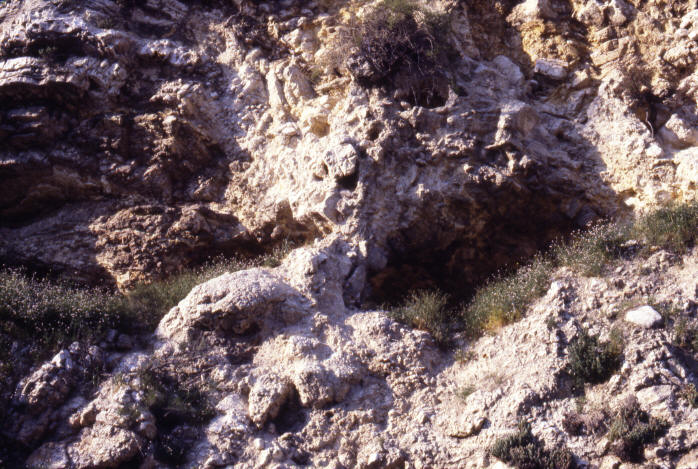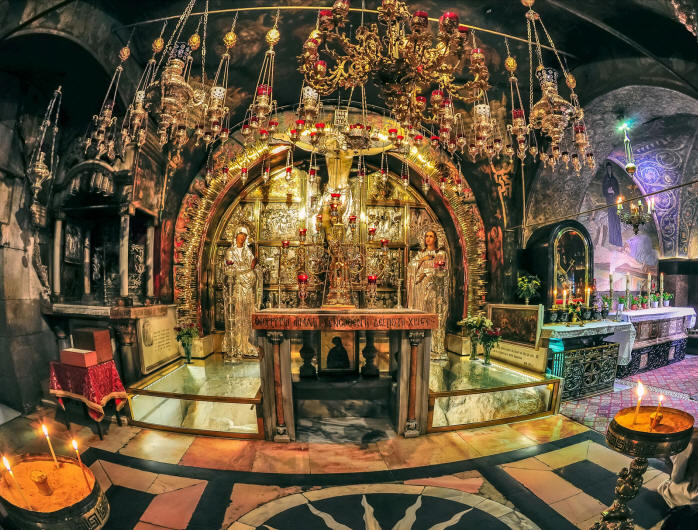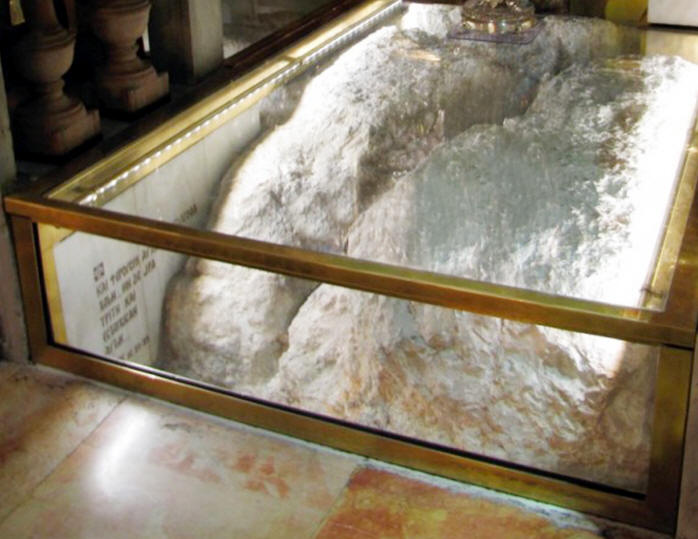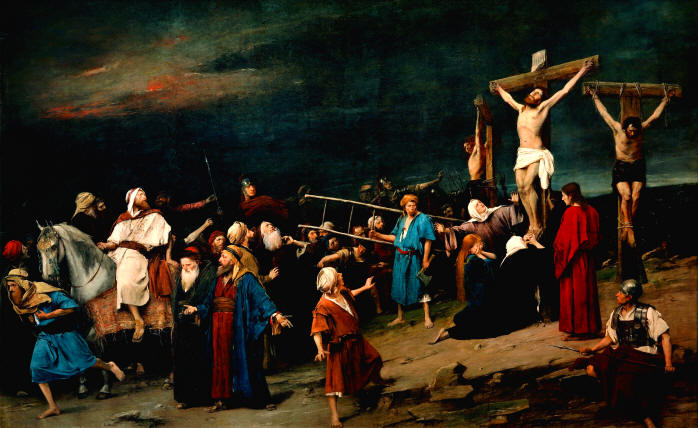

“Our Lenten Journey: Mt. Calvary”
Luke 23:33
Pastor Kevin Vogts
Trinity Lutheran Church
Paola, Kansas
Lent Service V—March 30, 2022
In the Name of the Father, and of the Son, and of the Holy
Spirit. Amen.
We continue our Lenten sermon series on the locations of Christ’s
sufferings and death with “Mt. Calvary.”
Because it was a place of execution, a place of torture and death, it
was called “The Place of the Skull.” In Aramaic “skull” is Golgotha, and through
the Latin translation of the Bible it came to be commonly known by the Latin
word for “skull”: “calvaria,” “Calvary.” Luke says, “When they came to the place
called the Skull, there they crucified him.”
Convention dictated that a city’s place of execution be just outside
the city walls. And, perversely, the Romans always located their places of
execution on a main thoroughfare. They purposely made their executions
public spectacles, because they believed in the deterrent effect of capital
punishment. Every execution was a warning and example to all not to dare defy
the Empire and its laws.

Jerusalem’s place of execution was probably just west of the city,
along the road leading to Joppa. This is the medieval Joppa Gate in the
city walls. “Golgotha” or “Calvary” was likely a small hill only a few
hundred feet outside the ancient Joppa Gate. That would be the equivalent
of the busiest interchange in downtown Kansas City, where all the major highways
converge.

This is different hill on the other side of Jerusalem called “Gordon’s
Calvary,” because a British general named Gordon who made a pilgrimage to the
holy land in the 1800’s thought that the rocky surface of this hill had the
appearance of a skull. Although it is very unlikely that this is the
actual site of Calvary, tourists are often taken here because it does give a
good idea of what Mt. Calvary probably looked like originally.

For, today, the actual site where Calvary was likely located is inside
and underneath the ancient Church of the Holy Sepulcher, which Emperor
Constantine built over the traditional sites of both Calvary and the tomb of
Christ, after he converted to Christianity in 315 A.D. At one time there
was great doubt about the authenticity of these sites inside this church.
However, extensive archaeological research within the last few decades has
changed many minds, and now most archaeologists and scholars agree that these
are indeed the authentic sites that the earliest Christians revered as the
locations of our Lord’s crucifixion, death, and resurrection.

Originally, the place of execution was probably a small hill in the
landscape, in order to make the crucifixions carried out there more prominent
and visible to the passing populace. However, because many layers of debris and
fill have accumulated over the centuries, today you actually go DOWN to Calvary,
in a small, dark chapel resembling a cave in the basement of the church. I
was not allowed to take pictures there so this photo is from Encyclopedia
Britannica.

On display is a large boulder of the original, living rock of Mt.
Calvary, the only part of the mount that was not cut away when the chapel was
built over it. And in the pavement on the floor is an inscription: “This Is the
Center of the Universe.”
This coming Monday will mark 42 years since I knelt in prayer in this
chapel on Good Friday in 1980. I remember vividly how reading that
mystical inscription brought tears to my eyes. For, it is so true that
what happened on Mt. Calvary is the central event in the history of the
universe. Mt. Calvary shows the depth of man’s sin and the depth of
God’s love.

This painting from the 1800’s by Hungarian artist Mihaly Munkacsy
portrays the dreadful events on Mt. Calvary.
At the beginning of John’s Gospel is a tragic, poignant verse: “He came
unto his own and his own received him not.” That indictment applies not
just to the Hebrew race but to the entire human race. Our God walked in
our world in the flesh, and what was humanity’s response? Isaiah says, “He
was despised and rejected by men . . . and we esteemed him not.”
The old spiritual asks, “Where you there when they crucified my Lord?”
What if you had been there? Would you have been any better than the
disciples, who deserted him and fled? Would you have been any better than
Peter, who denied him three times? Paul says in Romans, “What shall we
conclude then? Are we any better? Not at all! . . . For [we] are all
alike under the power of sin.”
Mt. Calvary shows the depth of man’s sin and the depth of God’s love.
Before the American patriot Nathan Hale was executed in 1776 he declared, “I
only regret that I have but one life to give for my country.” He was
willing to die for the cause of American liberty.
What about Jesus, as he was executed in 33 A.D.? What was the
cause he died for? Paul tells us in Romans: “You see, at just the right
time, when we were still powerless, Christ died for the ungodly. Very
rarely will anyone die for a righteous man, though for a good man someone might
possibly dare to die. But God demonstrates his own love for us in this:
While we were still sinners, Christ died for us.”
What was the cause Jesus died for? “Christ died for the ungodly .
. . Christ died for us.” He gave his life for your eternal liberty, to set
you free from sin with the payment of his own suffering and death, and to set
you free from death itself by his resurrection from the dead.
Mt. Calvary shows the depth of man’s sin and the depth of God’s love.
Even as he was being nailed to the cross, Jesus cried out, “Father, forgive
them, for they know not what they do.” Your heavenly Father does forgive
us our sins, and not only ours but the sins of the whole world, on account of
his Son’s sacrifice.
One commentator says: “Calvary shows the desperate vileness of sin. . .
But above all, Calvary speaks of love, a love that passes all
understanding. ‘Christ loved us and gave himself up for us as an offering
and sacrifice to God.’ Let us love him, because he so loved us!”*
Amen.
Return to Top | Return to Sermons | Home | Email Church Office